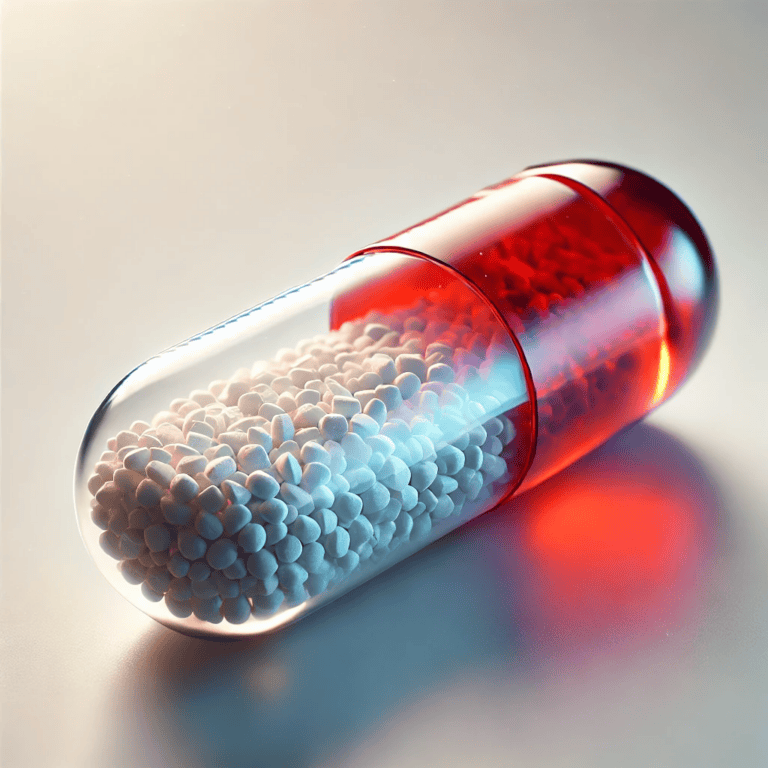Two-Photon Polymerization (2PP) 3D Printing: Making Tiny Things with Light
Imagine a 3D printer that can create objects too small to see with your eyes. It uses light instead of ink or plastic strands. It can make details so tiny that they are thinner than a human hair. This amazing technology is called Two-Photon Polymerization, or 2PP for short. It’s a special kind of 3D printing that lets us print very tiny structures using lasers. We will learn what 2PP is, how it works, and what cool things it can do.
What is Two-Photon Polymerization?
Two-Photon Polymerization is a way to 3D print very small, precise objects. The name sounds complex, but we can break it down. Polymerization means turning a liquid into a solid plastic by linking molecules together. Two-Photon means it uses two particles of light at the same time to start that process. So, 2PP uses a laser (a strong, focused light) that must hit in one spot with two photons (light particles) at once to harden the material.

How is this different from normal 3D printing? Most 3D printers build objects layer by layer, usually by melting plastic or curing resin with one photon of light. Two-Photon Polymerization printers build objects inside a special liquid resin that hardens only where the laser touches. The laser light in 2PP is often infrared (which is weaker than ultraviolet light). One infrared photon alone is not enough to solidify the resin. It’s like needing two keys turned at the same time to unlock something. Only when two photons hit the same place at once does the resin harden. This happens only in a tiny focused spot of the laser beam. That spot becomes a tiny solid dot within the liquid. By moving that laser spot around in 3D, the printer can draw a solid shape point by point inside the liquid. The result is a 3D object with extremely fine details.
How Does Two-Photon 3D Printing Work?
The 2PP printing process might sound like magic, but it follows logical steps. Here’s how it works in a few simple steps:
- Start with a liquid resin: We use a special liquid that hardens (turns solid) when enough light energy hits it. This liquid is sensitive to light, somewhat like how photographic film works but in 3D.
- Focus the laser: A very precise infrared laser is pointed into the liquid. Lenses focus the laser to a tiny point inside the resin. The laser is pulsed (flashed very fast) so it’s extremely intense in short bursts.
- Two-photon absorption: At the tiny focal point, two photons arrive at once and are absorbed by the resin molecules. This gives enough energy to trigger the chemical reaction that solidifies the resin in that small spot. If only one photon comes, nothing happens. The magic requires two at the same time.
- Drawing the object: The laser’s focus point moves in three dimensions inside the liquid. It “draws” the object step by step. It can move side-to-side and up-and-down with very high precision. Wherever the laser draws, the liquid turns into solid plastic. The rest of the resin stays liquid.
- Finishing the print: After drawing the whole object, we wash away the remaining liquid resin. What’s left is the tiny 3D printed object we designed, now solid and clean.
This process is often called direct laser writing because the laser writes the object into the material directly. The detail level is incredibly high. Each solidified point is like a voxel, a 3D pixel, that can be as small as a few tens of nanometers (a nanometer is a millionth of a millimeter). In fact, 2PP can create features as fine as 100 nanometers. (100 nanometers is about 1000 times thinner than a human hair!) Because the laser can move freely in the liquid, this method is a true 3D writing technique, not limited to making flat layers. It can form complex shapes that other methods cannot easily do.
What Can We Make with 2PP?
Two-Photon Polymerization lets us make many tiny and useful things. Here are some cool examples of what 2PP 3D printing can create:
- Micro Sculptures and Art: Artists have used 2PP to create microscopic sculptures. One artist made the world’s smallest human sculpture, only about 100 microns tall (0.1 mm). That is about the width of a human hair! The sculpture was so small it had to be viewed with a microscope. In another example, scientists printed a tiny Eiffel Tower that was only 120 microns tall. These miniatures show how 2PP can make very detailed shapes at a scale invisible to the naked eye.
- Microneedles for Painless Injections: 2PP can fabricate microneedle arrays – tiny needle patches for drug delivery or vaccines. These needles are so small you hardly feel them. They can pierce the skin without the pain of a normal injection. Because 2PP can create sharp and precise tips, it’s perfect for making these microneedles used in medicine. Such microneedle patches could one day allow painless vaccinations or blood sugar monitoring through the skin.
- Biomedical Scaffolds and Tissue Engineering: In biology and medicine, scientists print tiny 3D frameworks called scaffolds. These act like support structures that cells can grow on. Two-photon polymerization is great for making scaffolds that mimic the fine details of natural tissues. For example, researchers have printed networks of tiny channels similar to blood capillaries. These networks help grow tissue by carrying nutrients to cells. With 2PP’s high resolution, it’s possible to create structures on the scale of a single cell. This could help in efforts to grow organs or heal injuries by providing cells a realistic environment to grow in.
- Micro-robots and Devices: 2PP can build micro-robots and tiny devices with moving parts. Scientists have made microscopic robots that look like small screws or fish, which can swim in water when moved by magnets or light. These micro-robots might one day travel through the human body to deliver drugs or perform small surgeries. Because they are so small (often the size of a single-celled organism), they must be made with extremely fine detail—something 2PP printing provides. Researchers have also printed tiny sensors, springs, and gears for micro-machines using this technology.
- Micro-optics and Electronics: Two-photon polymerization is used to make micro-optics like tiny lenses and mirrors. For instance, it can print miniature lens arrays that focus light in advanced cameras or even in fiber optic communications. It’s also used to create parts of micro-electromechanical systems (MEMS) and tiny circuits, by forming shapes that would be very hard to cut or mold by traditional methods. This helps in prototyping small devices for electronics and photonics (devices that control light).
These examples show the versatility of 2PP. It’s used in art, medicine, robotics, and optics. The key is that it can produce complex 3D shapes at a microscopic scale that other methods can’t easily achieve. In fact, 2PP is so precise and flexible that it’s called a pioneering technology for manufacturing tiny structures. It enables scientists and engineers to design without the usual limitations – if they can imagine a tiny structure, 2PP can likely print it.
New Developments in 2PP Technology
Two-Photon Polymerization is an active area of research, and it keeps improving. Scientists and engineers are constantly finding ways to make this technology faster, better, and more useful. Here are some recent developments and trends in 2PP:
- Faster Printing Speeds: One challenge with 2PP is that building objects point-by-point can be slow. Recently, there have been big improvements in speed. In 2021, researchers and companies introduced better lasers and smarter control systems that allow much faster printing. By using high-powered lasers and even multiple laser beams at once, new 2PP printers can write objects significantly quicker than before. For example, some advanced systems use many focal points simultaneously (like multiple pens drawing at once) to speed up production.
- Larger and Multiple Objects: Traditionally, 2PP was used for tiny objects (micro-scale). Now, new machines can print larger pieces or many small pieces in parallel. In 2023, a company released a high-throughput 2PP printer that can produce parts on a wafer (a disc) with dozens or hundreds of micro-objects at the same time. This means we could manufacture micro parts in batches, not just one at a time. There is also progress in combining 2PP with other techniques to make it more scalable for industry.
- New Materials (Resins): Early 2PP printing mostly used a few types of light-sensitive liquids. Now scientists have developed specialized resins for different purposes. In 2022, for instance, new biocompatible resins were created. “Biocompatible” means they are safe to use in the body. These resins can be used to print implants or medical devices that won’t harm living tissue. Researchers are also making resins that contain nanoparticles or smart molecules. Some new resins have additives that make the printed object stronger or give it special electrical or optical properties. Others are soft, gel-like resins (hydrogels) that remain flexible after printing. For example, a soft hydrogel printed in 2PP could be used to make a tiny device that changes shape when temperature or pH changes – this is a step toward 4D printing, where the object can move or adapt after being made.
- Higher Resolution and Precision: 2PP already has incredible resolution (100 nm or even better), but researchers are pushing the limits further. They are studying the chemistry and physics of the process to get even finer details. By understanding how the two-photon reaction works at the molecular level, scientists have created new photoinitiators (the chemicals that absorb the photons to start the reaction) that absorb two photons more efficiently. This means the process can happen with lower laser power or in smaller volumes, sharpening the printing resolution. Improved optics and calibration (like better focusing lenses and nano-precision stages) also make the printing more accurate. The latest systems can create very smooth surfaces and complex shapes with fewer errors than before.
- Innovative Applications: As the technology improves, people find new ways to use 2PP. There’s ongoing research to integrate tiny 3D printed structures into everyday technology. For example, scientists are exploring printing tiny optical circuits directly on the end of optical fibers for faster internet communication, or tiny biosensors that can detect diseases from a small sample of blood. Environmental uses are being studied too, like printing tiny devices that could filter water by catching micro-pollutants. Each year, we see new creative applications, from tiny grippers that can grab individual cells to micro-swimmers that might deliver medicine precisely where needed. The field is moving fast, and many discoveries have happened in just the past few years.
All these advancements make Two-Photon Polymerization a cutting-edge technology. Experts predict that 2PP will play a big role in manufacturing for fields like biotechnology, electronics, and materials science. As it becomes faster and more accessible, even more people — from industrial engineers to doctors — will use it to solve problems. We might see 2PP machines in hospitals creating custom micro-implants, or in electronics labs making components for the next generation of devices. The technology that once was mainly in research labs is steadily moving toward wider use as it improves in speed, materials, and cost.
References:
- Faraji Rad, Z., Prewett, P. D., & Davies, G. J. (2021). High-resolution two-photon polymerization: the most versatile technique for the fabrication of microneedle arrays. Microsystems & Nanoengineering, 7(1), 71.
- Jing, X., Fu, H., Yu, B., Sun, M., & Wang, L. (2022). Two-photon polymerization for 3D biomedical scaffolds: Overview and updates. Frontiers in Bioengineering and Biotechnology, 10, 994355.
- Florea, L., Blasco, E., & Mattoli, V. (2023). New frontiers in materials and technologies for 3D two-photon polymerization. Advanced Functional Materials, 33(4), 2305697.
- Rahmani Dabbagh, S., Rezapour Sarabi, M., Birtek, M. T., Seyfi, S., & Sitti, M. (2022). 3D-printed microrobots from design to translation. Nature Communications, 13(1), 5875.
- Waters, R. (2014, November 14). Artist creates nanosculptures smaller than a human hair. New Atlas. Retrieved from https://newatlas.com/artist-nanosculptures-smaller-human-hair/34813/.



